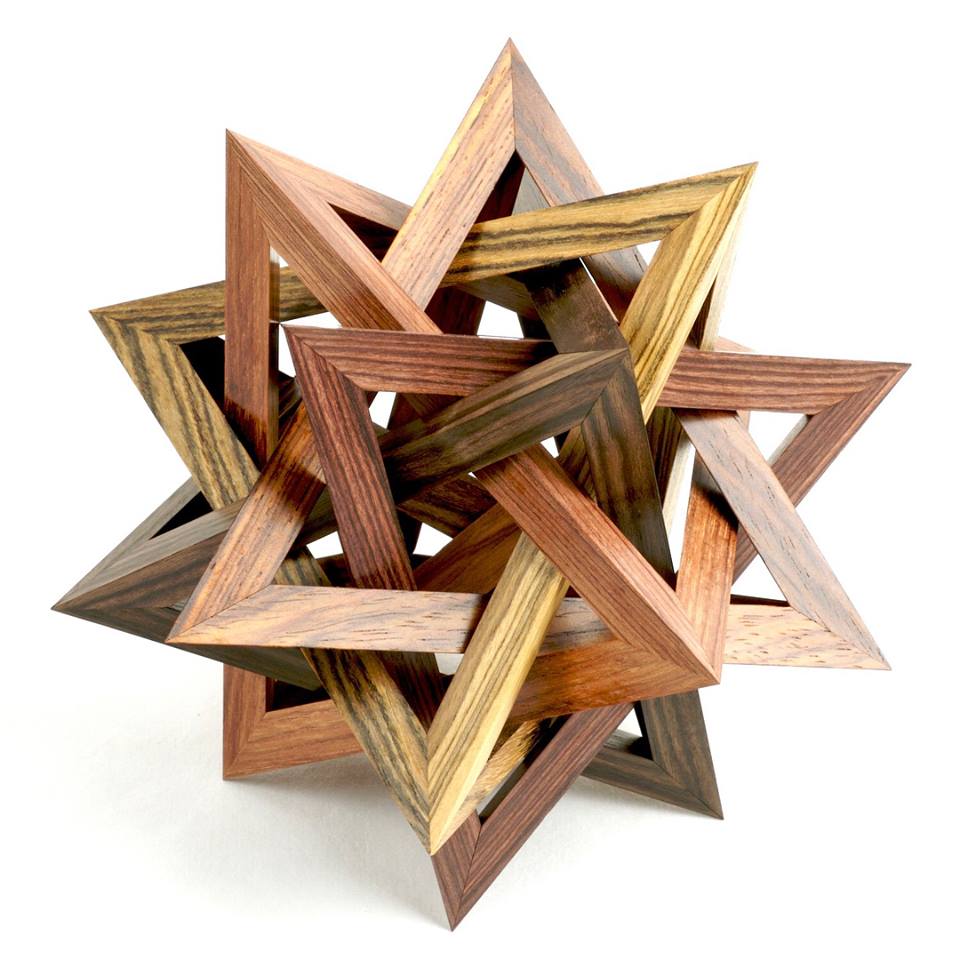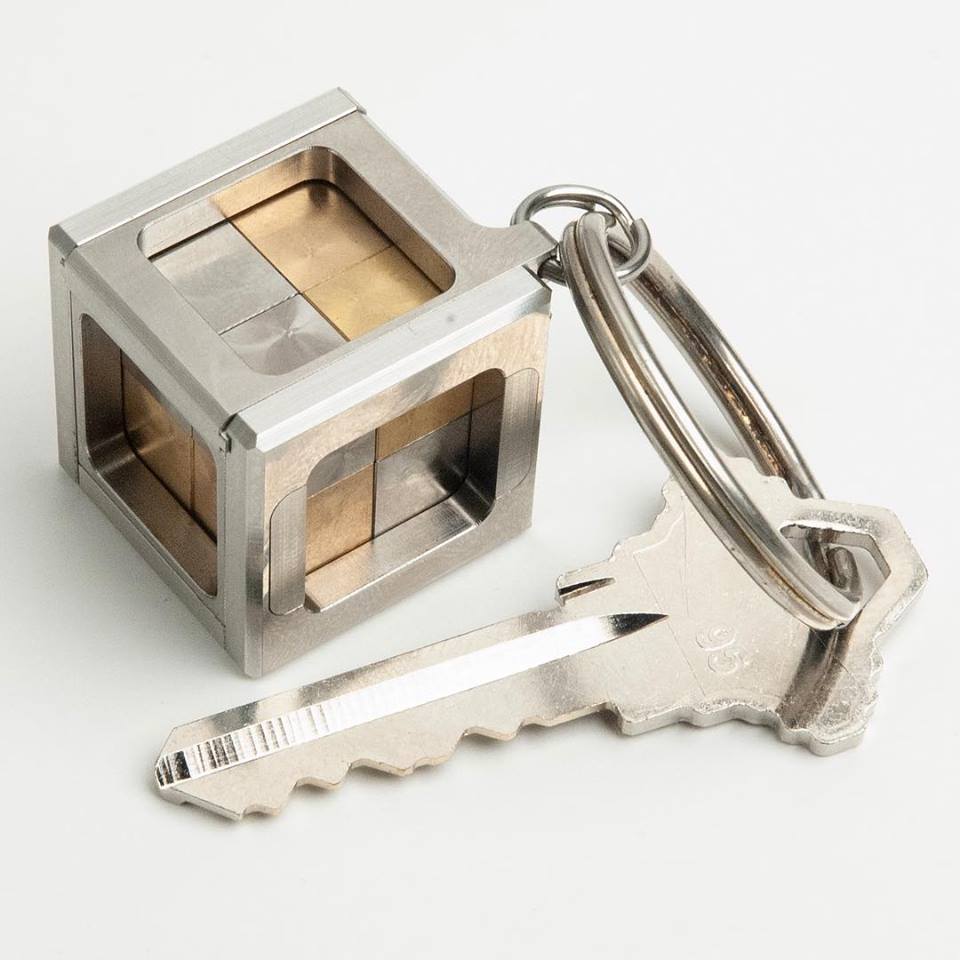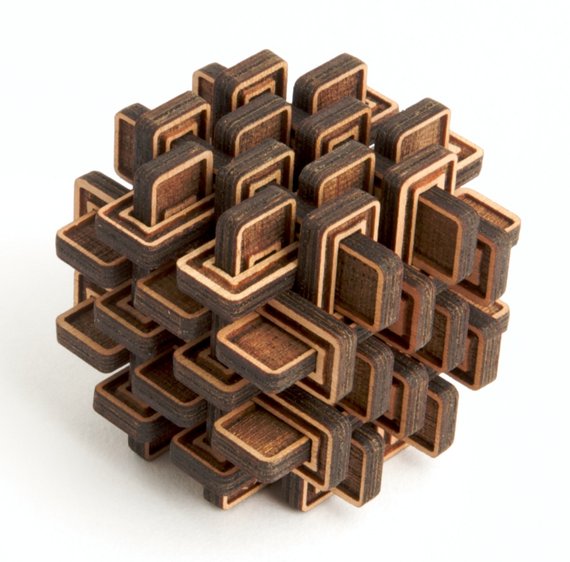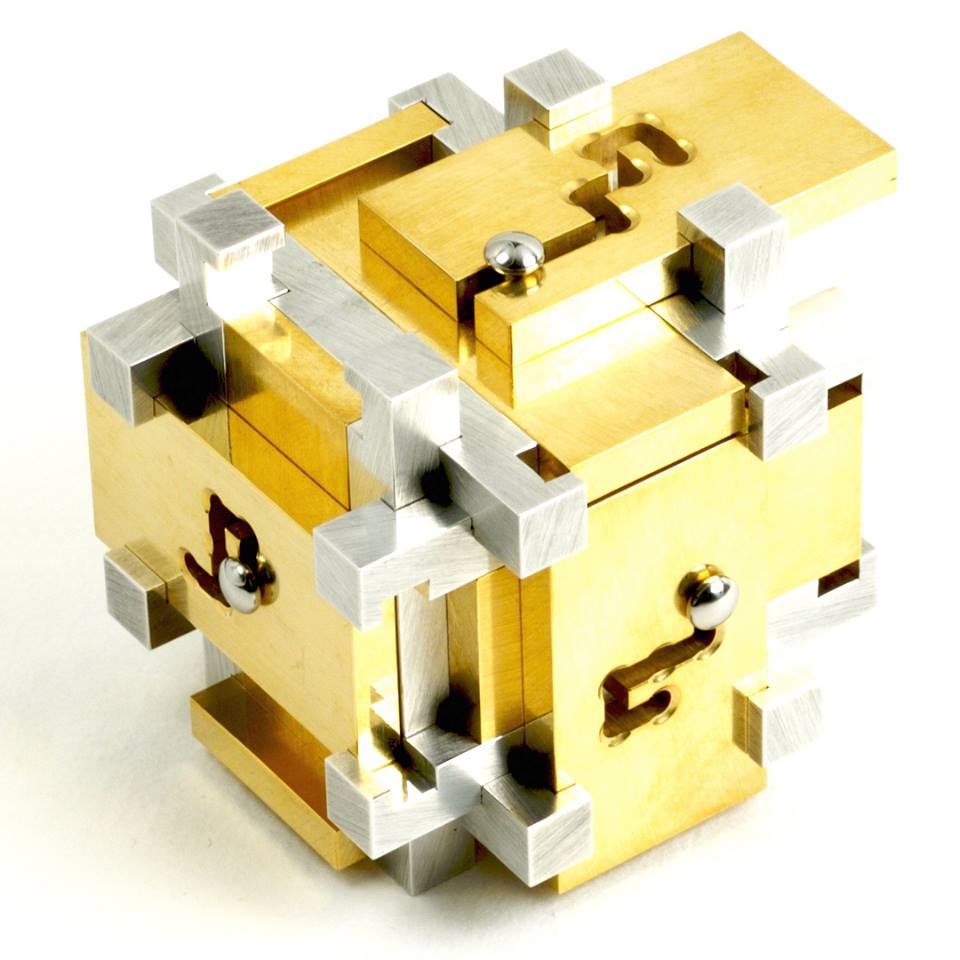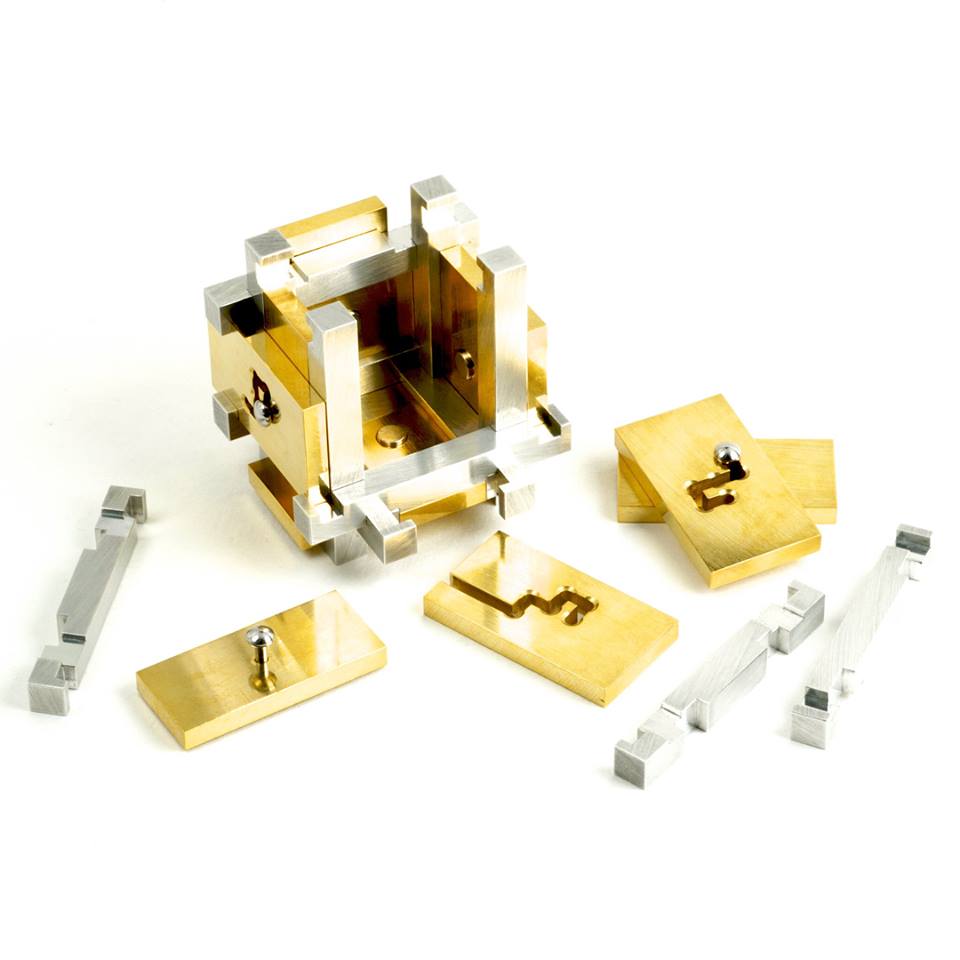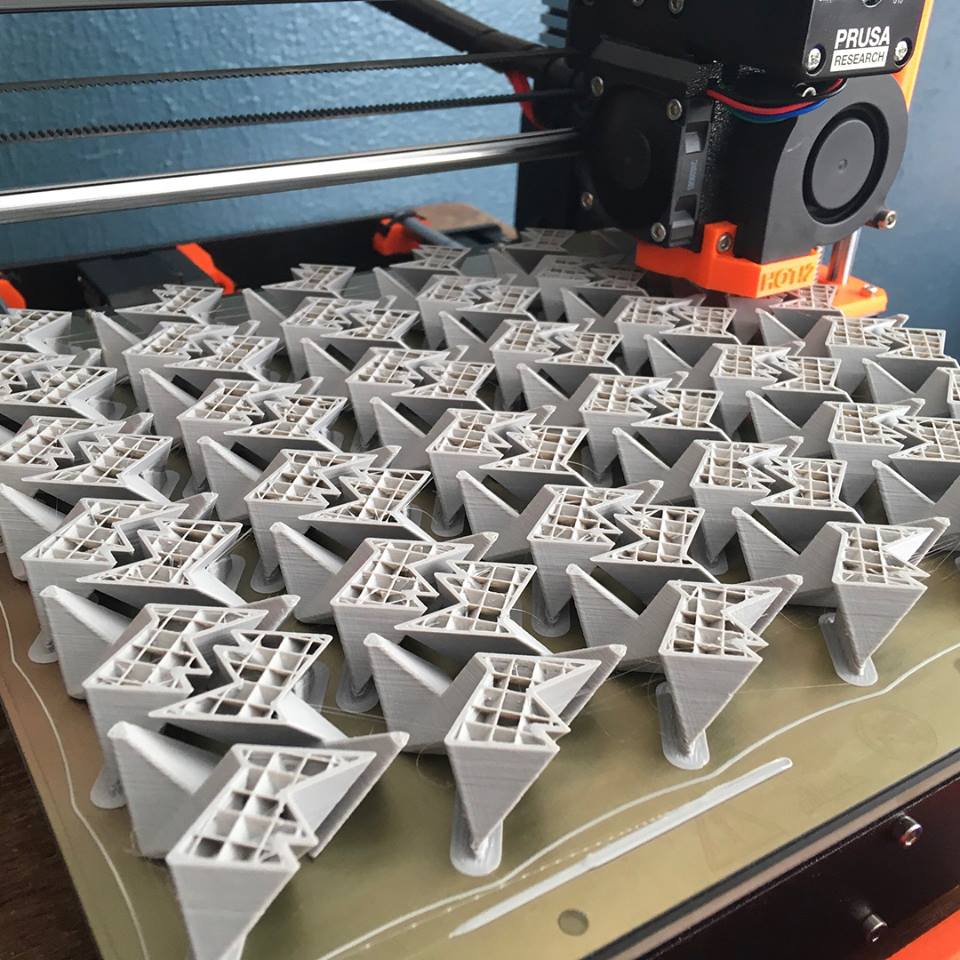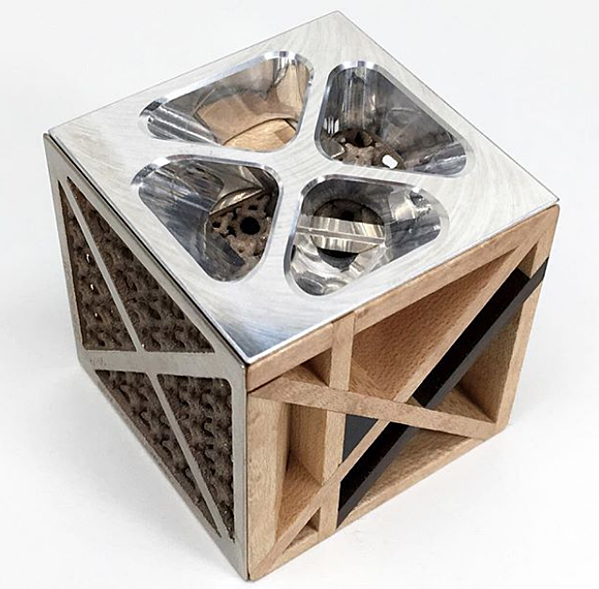Lee Krasnow of Pacific Puzzleworks Makes Mind-Blowing Puzzles
At Bantam Tools, we’ve been making high-precision, accessible desktop CNC mills for years, so it’s no surprise that we love all things CNC-related and glean inspiration from many forms of making. Being aficionados of precision, we've recently been mesmerized by the works of renowned Bay Area puzzle maker Lee Krasnow of Pacific Puzzleworks. Krasnow is widely regarded by puzzle collectors as one of the world’s best designers and craftsman of interlocking geometric puzzles and secret opening boxes. We reached out to gain insight into how he got started, as well as his tools, techniques, and challenges.
1. Why puzzles? What is it about them that fascinates you most?
See answer to #2, but also to be honest, I don't actually like puzzles that much anymore! I jokingly refer to this phenomenon as "The Gynecologist's Dilemma" whereby after a long day at work, the idea of having sex somehow loses its appeal. With that said, I'm very good at making puzzles, and I can't think of anything else I would rather do for a living, so I think my present disinterest in them is just a natural consequence of turning a hobby into a profession.
The thing that fascinates me most about puzzles is the high degree of precision required to make one well enough that the pieces fit together nicely, even if they're in the wrong configuration. Oftentimes the difference between a puzzle fitting too tightly or too loosely can be a matter of just a few thousandths of an inch (0.001"), and anybody can qualitatively notice this when playing with the puzzle just by how it "fits and feels" in their hands, even if they lack the quantitative understanding of just how small 0.001" is or how to make a measurement that precise.
I guess the most fascinating thing is that no matter how many measurements I take along the way in setting up puzzle production, at the end of the day, none of those measurements matter so long as the puzzle fits together well and feels nice in the hands as the pieces slide across each other. With all of that said, my favorite kinds of puzzles are the manufacturing challenges that I encounter on a day-to-day basis as I go about trying to make such precise little things.
2. When did you build your first one? What was it like?
When I was about 12 years old, I saw a movie called The Village of the Damned, which had a scene with a close-up shot showing how a Japanese sliding panel puzzle box opened up to reveal a small drawer inside. I was totally fascinated by this at the time, so I recorded it on a VHS tape and replayed that scene frame-by-frame countless times until I had reverse engineered how I thought it might work inside. Then I eventually designed my own version of it, which I subsequently made a copy of in my 7th-grade woodshop class. It turned out horrible, but it did technically function.
Later on, I saved some money and bought a small bandsaw that my parents let me set up in the garage, and I used it to make little sliding panel puzzle boxes and other random projects from wood. It was a hobby of mine for several years as a teen, and usually peaked around the holidays when I felt compelled to make small batches of gifts for my family.
3. You’re self-taught. Give us an overview of your journey. How did you get started? What helped you most?
I was going to school at Harvey Mudd College, pursing a degree in math and computers. It was interesting stuff, but the workload was somewhat overwhelming, and I found myself growing less interested in having a "cubicle" kind of job than I had previously imagined. To blow off steam, I started sneaking into the campus woodshop at night and would make puzzles on a little homemade router table that I had set up down there. As time went on, my enthusiasm for school work steadily declined, and I found myself spending more and more time in the woodshop at night.
Eventually I dropped out with the intention to try my hand at making puzzles for a living. This was fueled by a book I found on the internet called The Puzzling World of Polyhedral Dissectionsby Stewart Coffin (currently for sale under the title Geometric Puzzle Design), which gave me lots of very helpful information about how I could go about doing this.
I moved back to my hometown and took a job making custom windows, doors, and cabinets at "Pacific Grove Millworks" in order to get better woodshop experience. After a little less than a year at that job, I had saved enough money to buy some of my own machinery and started my own company, naming it Pacific Puzzleworks sort of as a token nod to the job I was leaving. I was young and willing to be poor in order to pursue my passion. I probably went broke at least a dozen times over the years, but there was always someone there to help me get back on my feet; at first this was family (thanks Mom!) and then eventually it became loyal collectors of mine who were willing to lend a hand when times were tough.
The reason I was able to teach myself so much over the years probably has to do with my tendency to raise the bar with each new project in attempt to outdo my previous best work. This leads me to design things which are slightly more complicated to fabricate than my current skill set, which results in manufacturing challenges.
As I already mentioned, those kinds of challenges are my favorite type of puzzles to solve! The reward for solving these puzzles that I create for myself has been an ever-increasing skill set and also an impressive portfolio of work. However, the penalty to pay has been that I'm constantly biting off more than I can chew in one bite, which can be stressful.
4. When did you start using digital tools for creating your puzzles?
In 2004 a colleague of mine told me about SolidWorks and strongly recommended that I start using it to design my puzzles. He told me that once I got going with it, I would use it for everything. He turned out to be 100% correct in this regard; not only did I start using SW to model my puzzles, but I was also using it to model all of my workholding fixtures too!
I quickly found that having such a powerful design tool allowed me to raise the bar much higher with each new project, and that I could do most of my production problem-solving work ahead of time on the computer rather than scratching my head at the table saw and then coming up with compromised solutions which felt like last-minute hacks.
5. What’s the most challenging aspect of making puzzles?
Selling them for a profit! Most people just have no concept of how much work goes into making things by hand.
6. What’s the most important thing to keep in mind when designing/making them?
When designing: It's very easy to design something that is so mathematically complicated that it stops being fun for the average person. I personally think that the best puzzles have simple and elegant solutions.
When making: Be super careful with tolerances and measurements! Figure out a way to measure error for every cut and then keep taking measurement all day long so you can dial in the cuts as accurately as possible! In my opinion, it's not possible to be too fanatical about this.
7. What’s your most epic fail? What did you learn?
Various failed negotiations/project proposals with potential clients/collectors of mine. Numerous projects have fallen apart on me partway through because of bad communication of intentions and expectations. The cumulative result of all of this has been a bunch of hard-learned lessons about how important it is to maintain healthy relationships with the people in my life.
8. How has having access to the high-end tools at Pier 9 affected your art?
For the period of time that I was working at Pier 9, having access to a nice 5-axis milling machine allowed me to design and fabricate things which would have been otherwise impossible for me to make with my own equipment. It was sort of as if someone loaned me a really fancy race car to drive around: very fun, but at the end of the day, I have to return the keys, and I'm back to getting around town on my skateboard again. My art changed during that period because the processes available to me changed, and I wanted to take advantage of it in the same way I might drive much more aggressively than I normally do if given the keys to a fast car.
9. What are three tools you can’t live without?
Well, a very literal answer would be that I think I might not want to live anymore if I couldn't use my hands or if my brain stopped being clever. A less literal interpretation of your “can't live without” question would have me saying that my three favorite tools are: milling machine, calipers, and a #2 X-Acto knife.
10. Who/what inspires you?
From the creative angle, I find most of my inspiration from within. I think it would take several lifetimes for me to implement all of the ideas that I have, so for the most part I do my best to avoid getting influenced by what other people are doing because I suspect it would end up distracting me from the path that I'm already on.
Outside of my puzzle-making career, I find lots of inspiration among the local sailing community here in the SF Bay Area, and in particular among members of the Singlehanded Sailing Society.
11. What are you currently working on?
Building a custom robotic attachment for a small milling machine of mine in order to automate one particular puzzle-making task which I've spent lots of time over the years doing. Also, I've recently purchased a few desktop 3D printers and am setting up an "entry level" product line in order to make some of my puzzle designs more accessible to everyday people.
12. With infinite resources and time, what would you make?
A few years ago, I came up with an idea for an extremely elaborate "puzzle chest," which would likely take me many years to design and create just one copy of it. Eventually this turned into something that fueled my answer to question #7, however I would still really love to pull off this project some day and am optimistic that I will find some fabulously wealthy patron to finance this undertaking — but if not, then I hope that I can find enough free time in my later years that it's possible to do it on my own. In either case, my plan would be to bury this treasure chest in some exotic location and then leave a map with clues, kind of like geocaching, I guess.
Thanks, Lee! To see more of Lee Krasnow's creations, be sure to follow him on Instagram and check out his Etsy page.
We can't help but to close with with this oldie but goodie: A video interview of Lee from the inaugural 2006 Maker Faire Bay Area, by none other than our own Bre Pettis. Classic!
Who inspires you in the world of CNC? We'd love to know! Drop us a line at support@bantamtools.com.


